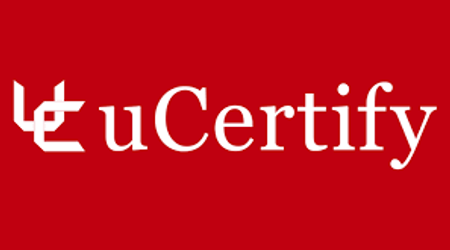The 3D Printed Implant Market is witnessing remarkable growth, driven by increasing demand for patient-specific implants, advancements in 3D printing technologies, and the rising prevalence of orthopedic and dental disorders. According to the latest report by Market Intelo, the market is projected to reach USD 12.5 billion by 2033, growing at a strong CAGR of 16.2% from 2024 to 2033.
Market Overview
3D printing has revolutionized the medical implant industry by enabling precision, customization, and cost-effectiveness. Unlike traditional implants, 3D printed implants are designed to match patient anatomy, reducing complications and recovery times. This technological leap is rapidly being adopted in orthopedic, dental, and cranial implants.
The growing aging population, coupled with the rising incidence of bone-related injuries and joint disorders, is fueling demand. Additionally, healthcare providers are increasingly turning to advanced implants that offer superior biocompatibility and faster integration with the human body.
Key Market Drivers
Increasing Demand for Personalized Healthcare
Patients are seeking treatments tailored to their unique physiology. 3D printed implants, designed with patient-specific anatomical data, are setting new standards in precision medicine.
Technological Advancements in 3D Printing
Innovations in biomaterials, bioprinting, and additive manufacturing are enhancing implant durability and functionality. These breakthroughs are expected to accelerate adoption across multiple healthcare domains.
Growing Orthopedic and Dental Applications
The surge in orthopedic procedures, such as hip and knee replacements, alongside dental restoration surgeries, is creating a significant market opportunity. The ability of 3D printed implants to reduce surgery time and recovery periods adds to their appeal.
Market Restraints
Despite rapid growth, the market faces challenges. High initial investment costs, stringent regulatory approvals, and limited reimbursement policies can hinder adoption. Additionally, the lack of skilled professionals in 3D implant design and manufacturing remains a barrier in emerging markets.
Market Segmentation
By Material
- Titanium & Titanium Alloys – Widely used for orthopedic implants due to their strength and biocompatibility.
- Ceramics – Increasingly preferred in dental implants for their durability.
- Polymers & Others – Offering flexibility in niche medical applications.
By Application
- Orthopedic Implants – Hip, knee, and spinal implants dominate the segment.
- Dental Implants – A rapidly growing category driven by cosmetic and restorative needs.
- Cranial & Maxillofacial Implants – Used in reconstructive surgeries with rising adoption.
By End User
- Hospitals & Clinics – Leading the adoption of 3D printed implants.
- Specialized Surgical Centers – Driving innovation in complex procedures.
- Research & Academic Institutes – Playing a critical role in advancing bioprinting technologies.
Regional Insights
North America
North America leads the market, accounting for the largest revenue share due to advanced healthcare infrastructure, significant R&D investment, and rapid adoption of new technologies.
Europe
Europe follows closely, supported by government initiatives to encourage innovation and strong presence of leading medical device companies.
Asia-Pacific
The Asia-Pacific region is expected to record the fastest growth, driven by expanding healthcare access, rising disposable incomes, and increasing medical tourism.
Latin America & Middle East
These regions are gradually adopting 3D printed implants, with growing investments in healthcare modernization and collaborations with global manufacturers.
Competitive Landscape
The 3D printed implant market is highly competitive, with players focusing on mergers, acquisitions, and partnerships to expand market presence. Key companies are investing in R&D to develop next-generation implants that improve patient outcomes and lower costs.
Prominent companies include:
- Stryker Corporation
- Zimmer Biomet
- EOS GmbH
- 3D Systems Corporation
- Renishaw plc
- Materialise NV
- Medtronic plc
These players are leveraging cutting-edge additive manufacturing techniques to gain a competitive edge in the global marketplace.
Future Outlook
The 3D printed implant industry is set to transform the healthcare sector by making surgeries more efficient and patient outcomes more positive. With the integration of artificial intelligence, robotics, and biomaterials, the next decade will see a surge in innovation.
Emerging trends include:
- Development of bioresorbable implants.
- Expansion of multi-material printing technologies.
- Growing collaboration between medical device manufacturers and software developers.
By 2033, the global 3D printed implant market will not only expand in value but also redefine standards in precision medicine and surgical innovation.
Conclusion
The 3D printed implant market is entering an exciting growth phase, reshaping the way healthcare providers approach surgical treatments. As technology advances and patient-specific demands increase, stakeholders across the value chain—manufacturers, healthcare providers, and researchers—must prepare for a future where customization and innovation drive market success.
Read Full Research Study: https://marketintelo.com/report/3d-printed-implant-market
Perched atop serene hills in Tripunithura, Kochi, the Hill Palace Museum stands as Kerala’s first heritage museum and the largest archaeological museum in the state. Once the royal residence of the Maharajas of Cochin, this grand palace has been transformed into an ethno-archaeological museum, offering a fascinating journey through time. Set across 52 acres of lush greenery, the museum houses rare manuscripts, ancient sculptures, royal artefacts, and a botanical garden—a treasure trove...
Nestled in the historic quarters of Fort Kochi, St. Francis Church is a silent witness to centuries of colonial rule, maritime exploration, and cultural exchanges. Built in 1503, it is the oldest European-built church in India and played a pivotal role in shaping the religious and architectural landscape of the region. A significant marker of history, the church is also known as the original burial site of Vasco da Gama, the Portuguese explorer who discovered the sea route to India. Des...
In a significant diplomatic engagement today, MD Naidu, Founder & Visionary of the Stree Shakti Pratibha Awards , met His Excellency Dr. Shankar Prasad Sharma, Ambassador of Nepal to India, at the Embassy of Nepal, New Delhi. During the 20-minute discussion, MD Naidu extended an official invitation for Nepal’s participation in the Stree Shakti Pratibha Awards 2025 . The Ambassador warmly welcomed the initiative and confirmed that Nepal will have definite representation a...
Mr. M.D. Naidu, Founder & CEO of Pracharam Media and Organiser of the Stree Shakti Pratibha Awards 2025, met and felicitated Dr. Kadiyam Kavya garu today in New Delhi during a warm and inspiring interaction. During the meeting, Mr. Naidu honoured Dr. Kavya garu with a traditional shawl and presented a specially crafted digital portrait, appreciating her impactful contributions as a youth inspiration, public influencer, and strong advocate for women empowerment. Mr. Naidu also...
Mr. M.D. Naidu, Founder & CEO of Pracharam Media and Organiser of the Stree Shakti Pratibha Awards 2025, attended a special cultural evening hosted by Her Excellency Mahishini Colonne, High Commissioner of Sri Lanka to India, at the Sri Lanka Residence in Chanakyapuri, New Delhi. The event celebrated the launch of the unique travelogue, “Around the World in Magnets – Sri Lanka”, authored by Dr. Anthony Vipin Das and Ms. Vidushi Duggal, featuring an insightful conversation moderated...
Keerthi Foundation, a leading rehabilitation and de-addiction centre in Chennai, today announced the expansion of its treatment programs aimed at addressing alcohol dependency, drug addiction, and behavioural health issues. The organisation has strengthened its clinical, counselling, and wellness services to meet the increasing demand for structured recovery support in Tamil Nadu. India has witnessed a significant rise in substance-use disorders over the past decade, and metropolitan ci...
Aryan Hitec Waterproofing Pvt Ltd, one of the region’s fastest-growing specialists in structural protection and leakage prevention, today announced the expansion of its service capabilities to meet the increasing demand for waterproofing in Chennai. With rising infrastructure development, homeowners, builders, and commercial property owners are seeking reliable and long-lasting solutions to protect their structures from water damage. For over a decade, Aryan Hitec Waterproofing Pvt Ltd...
The recent bomb blast that has shaken the nation is a dark and painful tragedy that has left every Indian citizen in deep sorrow. At a time when India is progressing with unity, development, and global recognition, such acts of terror attempt to break the peace and harmony that define our nation. This attack has claimed innocent lives and caused unimaginable suffering to many families. MD Naidu, Founder & CEO of Pracharam Media and Chairman of the Stree Shakti Pratibha Awards, expre...
The organizing committee of the Stree Shakti Pratibha Awards – 2025 is proud to announce that noted costume designer, creative director, and film industry contributor Mrs. Pragathi Rishab Shetty has officially accepted the invitation to receive the “Stree Shakti Creative Excellence Award – 2025.” This honor celebrates her remarkable achievements in bringing authenticity, cultural depth, and aesthetic excellence to Indian cinema. As a creative professional who bridges art, tradition, and...
In an era dominated by fast-paced digital information, StorifyNews.com has established itself as a reliable and user-friendly online news aggregator, curating credible stories from trusted sources worldwide. The platform is designed to simplify news consumption by bringing the latest updates in politics, business, technology, entertainment, health, and global affairs — all in one place. Founded with a mission to make news accessible and unbiased, Storify News ensures readers stay inform...
Moblics Enterprises, one of India’s rapidly expanding electronics manufacturers, is redefining the LED lighting and PCB industry from its base in Aurangabad, Bihar. With a growing national footprint, an expanding distributor network, and an estimated revenue scale of ₹5–10 crore annually, Moblics is positioning itself as one of the fastest-growing regional electronics brands in North India. From Local Startup to Manufacturing Leader Founded in 2021 by Mrinal Kishor Mishra, Mobli...
Pracharam Media is honoured to announce that the Hon’ble President of India has graciously conveyed her greetings and best wishes to the Stree Shakti Pratibha Awards 2025 , scheduled for 21st and 22nd November at Mallareddy University, Hyderabad. In an official communication from Rashtrapati Bhavan, the Hon’ble President expressed appreciation for the initiative and extended her warm wishes for the success of the programme celebrating women achievers. The correspondence further me...
The Aircraft Maintenance Engineering Common Entrance Test (AME CET 2026) has officially opened applications for its upcoming examination cycle. AME CET is a national-level entrance exam that offers admission, scholarships, and career opportunities in the aviation sector — including Aircraft Maintenance Engineering (AME), Aeronautical Engineering, Aerospace Engineering, Commercial Pilot License (CPL), BBA Aviation, and Cabin Crew programs. The AME CET 2026 examination is conducted to pro...
MailsDaddy, a leading provider of innovative email management solutions, is proud to announce the launch of its latest email backup software. This software is designed to simplify, secure, and streamline the process of backing up and restoring emails across multiple platforms. In today's digital age, email remains the backbone of communication for both businesses and individuals. Recognizing the critical need to safeguard important email data, MailsDaddy has developed a solution that en...
In the dynamic realm of Indian journalism, Dr. Thatipudi V. V. Satyanarayana, the Editor of Andhra Focus Daily , stands as a symbol of integrity, intellect, and inspirational leadership. A man of words and wisdom, he has redefined the power of regional media through his balanced, responsible, and reform-oriented journalism that connects deeply with the pulse of Andhra Pradesh. An Editor with a Mission Guided by the belief that “Journalism is not merely about headlines, but...
Medliva Lifesciences, India’s most advanced and specialized pharmaceutical company, excelled in the manufacturing & franchise businesses. A consistent contributor to the healthcare sector and the pharmaceutical industry, we are a pioneer in offering comprehensive pharmaceutical solutions and are committed to providing a trusted and superior product portfolio throughout India at affordable prices. Medliva Lifesciences: A quality-centric pharmaceutical franchise & manufacturing c...
The glittering Stree Shakti Pratibha Awards 2025 lit up Hyderabad with a celebration of extraordinary women who are transforming India through their strength, talent, and vision. Among the most celebrated honorees was Actress Apsara Rani, who received the “Stree Shakti Rising Star Award 2025” for her exceptional contribution to Indian cinema and her fearless portrayal of empowered women on screen. Apsara Rani, known for her bold choices and dedication to her craft, continues to i...
The prestigious Stree Shakti Pratibha Awards 2025 witnessed an evening of inspiration, where the spirit of women empowerment and nation-building came alive. Among the most celebrated honorees was Kalpana Ramesh, who received the “Stree Shakti Water Conservation Hero Award 2025” for her extraordinary contribution to water sustainability, community-led conservation, and eco-conscious urban reform. Fondly recognized as Hyderabad’s Water Warrior , Kalpana Ramesh has been the fo...
Ruvab Salon and FasterCapital today announced a strategic partnership through FasterCapital’s Equitypilot program, beginning immediately in Patna and targeting Tier II & III Indian cities, to accelerate Ruvab’s integrated salon, academy, photo/makeup and digital-advertising platform and scale operations with capital, tech and market access. Market Opportunity & Problem Statement India’s beauty and salon sector is rapidly expanding valued at $10.8B in 2024 with cont...
Noted author, business coach, and social entrepreneur MD Naidu, Founder & CEO of Pracharam Media , met Hon’ble Former President of India, Shri Ram Nath Kovind Ji, at his official residence in New Delhi to extend a personal invitation for the upcoming Stree Shakti Pratibha Awards 2025, a national initiative celebrating women achievers from Andhra Pradesh and Telangana. During the cordial meeting, MD Naidu presented a handcrafted memento and a signed copy of his book, “Mastering...
Author, business coach, and social entrepreneur MD Naidu, Founder & CEO of Pracharam Media , met senior Congress leaders Smt. Sonia Gandhi Ji and Smt. Priyanka Gandhi Vadra Ji at the All India Congress Committee (AICC) headquarters in New Delhi, extending a personal invitation to both leaders for the upcoming Stree Shakti Pratibha Awards 2025. During the visit, Naidu presented a specially crafted memento and a signed copy of his book, “Mastering Entrepreneurship: A Journey of...
Noted author, business coach, and social entrepreneur MD Naidu, Founder & CEO of Pracharam Media, has written a heartfelt letter to Hon’ble Prime Minister Shri Narendra Modi Ji, seeking national encouragement for youth and women empowerment initiatives emerging from Andhra Pradesh. In his two-page inspirational letter titled “A Salute from Andhra Pradesh – Empowering Youth and Women for Viksit Bharat @ 2047,” Naidu praised the Prime Minister’s transformative leadership and ex...
AstroSutraa, India’s most innovative astrology and spiritual-wellness platform, proudly announces the launch of its breakthrough feature instaPredictions. This first-of-its-kind innovation allows users to get instant astrological answers to any question, without entering their birth details, only current location and time , directly on the AstroSut...
In a state once shadowed by traditional industries, Moblics Enterprises is lighting the path for a new era of innovation in LED technology and electronics manufacturing. As a rising startup in Bihar, the company has quickly established itself as a market leader in LED bulbs, LED lights, and PCB manufacturing, drawing attention from buyers, distributors, and policymakers alike. Industry observers note that Moblics' impact extends beyond its product lines. By combining local product...
In India’s fast-growing LED lighting industry, a quiet revolution is taking place — not in a metro city, but in the heart of Bihar. Moblics Lights , founded by Mrinal Kishor Mishra, is emerging as one of the most promising names in LED bulb and light manufacturing, proving that world-class innovation can come from anywhere in India. Founded with a clear vision to make energy-efficient lighting affordable and accessible, Moblics Lights began as a small trading setup in Aurangabad....
In an increasingly data-driven world, the ability to interpret and act upon insights from vast amounts of information has become a cornerstone of business success. Recognizing this critical need, uCertify, a leading provider of online certification and training programs, today announced the launch of a new suite of data science courses specifically designed for busines...
The Future Founders Co. (FFC) and Nebula Accelerator signed an MoU on 16 September 2025 at the Grand Finale of the India Sustainability Startathon (ISS) 2025, marking the launch of the ISS Campus Climate Action Fund powered by Nebula. This initiative will support 100 student-led climate action projects in university campuses across India. The fund is part of the India Sustainability Startathon (ISS) movement. 10 teams from the top hundred teams that participated in ISS 2025 were selecte...
“Bolega India. Toh Badhega India.” India’s rise isn’t powered by software. It’s powered by the voices of 63 million small businesses — and now, those voices have AI on their side. Bol Bharat AI is officially live — India’s first Voice AI Agent platform in Indian regional languages that replaces telecallers, receptionists, and sales reps with smart, scalable, and affordable AI voice agents. And it’s not just affordable — it’s national-scale revolutionary. Startin...
In a landmark event for India’s fashion industry, Dr. Yash Ramu , esteemed as India’s Fashion Guru, has launched M Universe International 2025, positioning India as a central hub in the global pageant arena. This initiative, under the aegis of YS International Fashion Week, offers a transformative platform for aspiring models, designers, and artists, providing them with international exposure a...
Indian entrepreneur Shivendra Saroj has established a strong presence across three diverse sectors — premium bathroom & water solutions, organic food processing & healthy snacks, and architectural hardware. MeraBathroom Pvt Ltd (Delhi,Bhar,Faridabad-based) MeraBathroom offers end-to-end premium bathroom and water-management solutions, from design to installation and after-sales. Partnering with global brands like Grohe, Duravit, Grundfos, the company has successfully del...
Mifter , a Jaipur-based innovative fashion delivery startup, is transforming the way people shop by delivering fashion products to customers’ doorsteps in just 60 minutes. With the vision to make fashion shopping faster, more reliable, and accessible, Mifter ensures that last-minute outfit needs, party looks, or special occasions are never delayed. Customers can now enjoy the convenience of instant delivery without...
Gautam Law Chamber (GLC), a pioneering law firm based in Rajasthan, India, has been recognized by Global Radiance Review, USA as one of the "20 Smartest Companies of the Year 2025." Global Radiance Review is a prestigious international business magazine headquartered in New Jersey and published from Silicon Valley, California. Each year, it selects global companies redefining industries with innovation, resilience, and leadership. This recognition positions GLC among the wo...
Cybercrime isn't slowing down. Tackling it right requires more than just effort—it needs the right guidance. Enter “First Responders Guide for Collecting Cyber Forensic Evidence,” a practical bilingual handbook designed to equip front-line law enforcement officers and investigators with clear, actionable methods to secure digital crime scenes. Key Highlights: Bilingual Field Guide: Hindi and English for maximum reach. Hands-on Learning: Real-world cas...
In an industry that thrives on music, where countless voices try to make their mark, one name is steadily rising as the most soulful and addictive sound of this generation - Rushikesh Hiwrale A singer, composer, lyricist & storyteller, Rushikesh has proven that music is not just about beats and rhythm; it is about feeling every note. His unique ability to translate emotions into melodies has made him a favourite among listeners who crave music with depth and honesty <...
Gautam Law Chamber (GLC), a leading law firm and international dispute resolution innovator, today announced the launch of its Indo–U.S. Arbitration & Mediation Hub. This initiative positions GLC as one of the first private institutions in India to provide a neutral, globally recognized platform for resolving business, investment, and commercial disputes between Indian and U.S. entities. About the Hub The GLC Indo–U.S. Arbitration Hub has been designed to: Provide...
Gautam Law Chamber is delighted to announce that its founder, Advocate Vinayak Chitlangi, has been selected for inclusion in the prestigious Global Law Experts (GLE) Management Handbook 2025 as a leading authority in Real Estate Law – India. The GLE Handbook is one of the world’s most respected legal guides, now in its 13th edition, featuring lawyers from 50+ practice areas across 100+ countries. The publication is distributed globally in hardcopy and digital formats, reaching business...




































